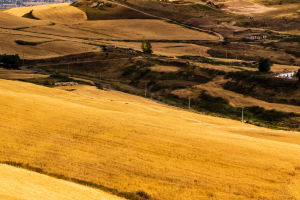Mountaineering, the art of ascending mountains on foot, is a profound sport embodying the human spirit's pursuit of greater heights and challenges.
It encompasses a wide spectrum of activities, from scaling towering peaks to traversing rugged terrain, with the ultimate goal of reaching the summit.
Mountaineering is not confined by altitude, climbing techniques, or equipment usage, allowing for diverse approaches and experiences.
At its core, mountaineering represents the adventurous spirit of humanity, pushing boundaries and striving for excellence. It is a testament to the relentless pursuit of progress—faster, higher, and stronger—an ethos deeply ingrained in the human psyche. Moreover, it serves as a positive reflection of a nation's collective ambition and determination.
Beyond the physical exertion and technical skill required, mountaineering is a courageous endeavor fraught with danger and uncertainty. Climbers must confront life-threatening hazards such as avalanches, extreme cold, and oxygen deprivation, particularly in the treacherous "death zone" above 8,000 meters.
Despite these risks, the allure of mountaineering remains irresistible, drawing individuals seeking adventure and self-discovery.
The origins of mountaineering are steeped in legend, with tales of Alpine youths braving perilous heights to pluck the coveted alpine rose for their beloveds. Through these daring exploits, early mountaineers honed their skills and knowledge, laying the foundation for the sport's evolution into a beloved pastime and competitive pursuit.
In recent years, commercialization has transformed the landscape of mountaineering, particularly on iconic peaks like Mount Everest. While once an endeavor reserved for the elite few, Everest expeditions have become increasingly accessible to affluent adventurers seeking prestige and bragging rights.
Despite criticisms of commercialization diluting the sport's purity, it has also brought improvements in safety measures and amenities for climbers.
Modern Everest Base Camp, situated above 5,000 meters, offers a stark contrast to the harsh conditions of the mountain. Equipped with creature comforts such as carpeted tents, solar-powered amenities, and gourmet food options, it caters to the needs of discerning clientele, including business magnates and tech moguls.
Sherpa guides provide personalized assistance, from cooking meals to carrying oxygen tanks, ensuring a luxurious yet safe ascent.
The influx of middle-class climbers has reshaped the demographic of Everest expeditions, with many possessing prior experience in endurance sports like running and triathlons. Their disciplined approach and adherence to guidelines contribute to a safer climbing environment, though clashes may arise with affluent individuals accustomed to privilege and entitlement.
For the nouveau riche, summiting Everest serves as a status symbol—a testament to their wealth and influence. However, for the dedicated mountaineer, it represents a culmination of years of training, perseverance, and respect for the mountains. The allure of Everest lies not in its luxury accommodations but in the raw beauty and formidable challenge it presents.
Mountaineering embodies the indomitable spirit of humanity, transcending physical boundaries and societal norms. While commercialization has brought newfound accessibility and comfort to Everest expeditions, the essence of mountaineering remains rooted in adventure, resilience, and the pursuit of greatness.
Mountaineering, while often glamorized, also carries inherent risks and responsibilities. It demands respect for the environment and fellow climbers, as well as a commitment to safety and ethical practices.
Beyond the physical challenges, climbers must contend with altitude sickness, unpredictable weather, and the potential for accidents. Moreover, the commercialization of Everest has sparked debates about its impact on local communities and ecosystems, raising questions about sustainability and cultural preservation.


